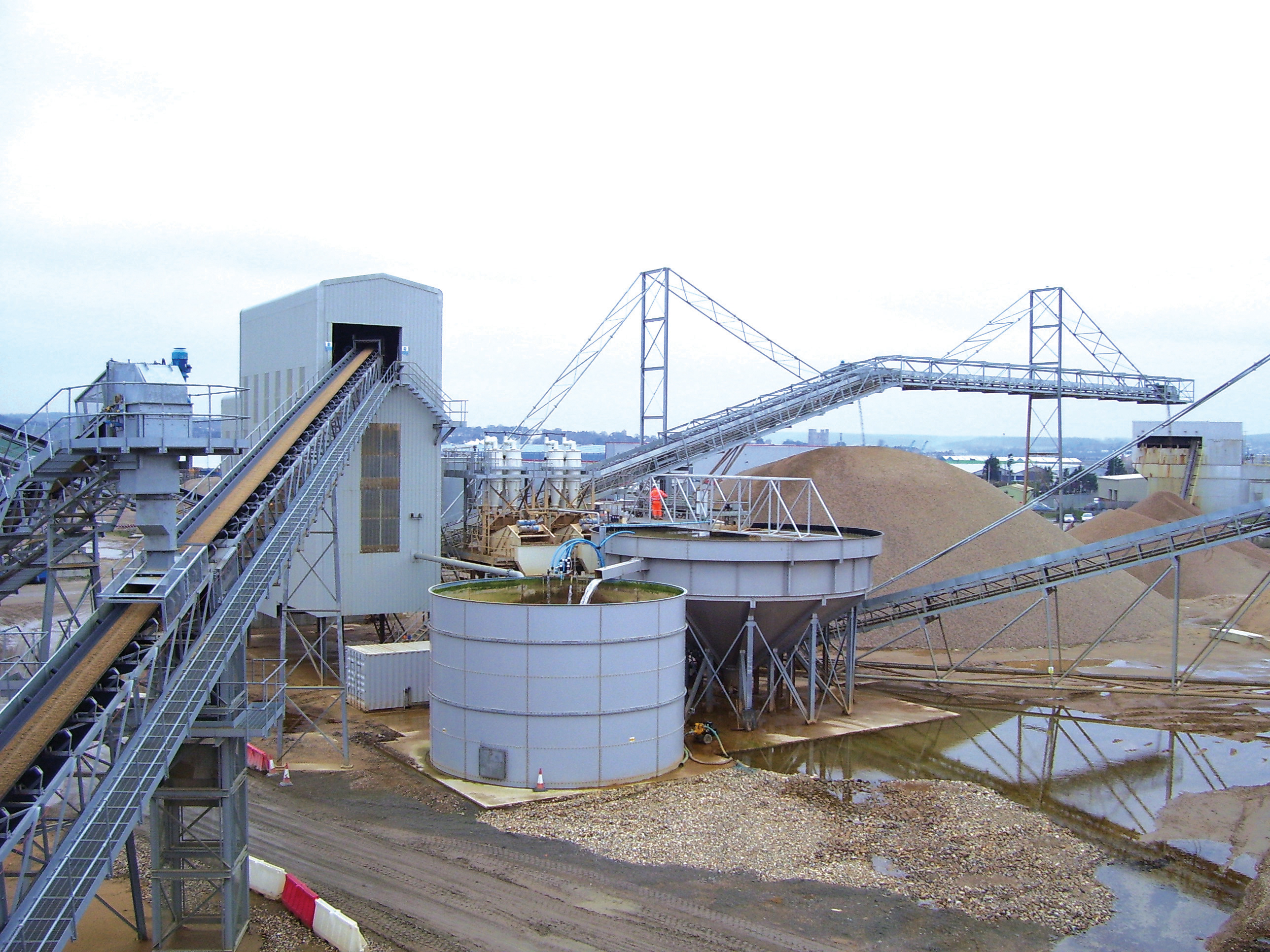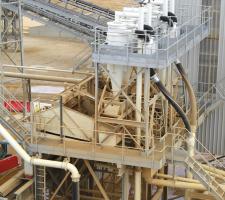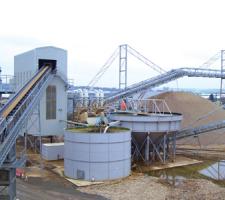
Marine sand and gravel processing at Hanson's Frindsbury Wharf has improved with investment in a new plant
Marine won sand and gravel is an important resource in the south east of the UK and redevelopment of an existing plant is set to improve delivery of these materials. Providing sand and gravel to sites up to 35km away,
Hanson has invested in redeveloping its Frindbury Wharf processing facilities to replace its old plant with one that has capacity to deliver 1.2million tonnes per year. However, the new facility not only offers better efficiency, but has also reduced energy consumption and improved safety.
The operation supplies materials for concrete production such as 10, 20, and 40mm aggregates including sharp washed sand to predominately ready mixed concrete operations.
Hanson acquired the site, which features a 200m cofferdam and wharf, in 1989 and the previous 150tonne per hour plant was built in 1990 but was not ideal. The old plant was fed by a loading shovel, which carried materials 120m to the plant feed hopper with crushing of larger sizes carried out by mobile equipment. This meant that materials were first processed then stored, crushed and then processed again.
To deliver the improvements, Hanson worked with main contractor
Processing
Various grades of raw marine aggregates are transported to Frindsbury by ship - 4500 to 5000tonnes of product at a time - and ground stockpiled for plant processing. It takes about 4.5hours to discharge around high water.
Three Skako feeders carry out the principle discharge functions all of which are galvanised to suit the corrosive environment and the abrasive feed material. Both the hopper bottom sections and feeder trays are lined with Hardox 400 replaceable liner plates.
"The Skako feeders can be run either manually or automatically," explained Hanson Frindsbury unit manager Mike Smith. "They can be run as a pair or individually. We can vary the percentage each feeder is working at the touch of the button on the computer control screen. This is how we blend the material." The main feed is fed to a large scalpings screen where +100mm is screened off to an external storage bay, while the lower deck screens separate the 40 to 100mm clean stone for crushing and 0 to 32mm feed material to the wet screen house.
The 40 -100mm goes back through a crusher house where there are two
The Sandvik crushers automatically power down when not needed, enabling a power saving of 132,000kW a year. Sandvik's ASRI control system looks after the wear rate, which can be displayed on a daily basis allowing planned changes of wear parts. Two metal detectors on the conveyors ensure any metal is kept out of the crushers.
Washing
In the wash house, the plant separates the single size material and flumes down the water/sand product into a
Wash water and fines from the aggregate washing and sand system are treated by the effluent treatment system, supplied by
The system automates the delivery of pre-prepared flocculent solution to achieve solids/liquid separation. The thickened slurry underflow is discharged at the base of the cone shaped vessel and clear supernatant being discharged over the weir plates fixed to the inner face of the peripheral gallery on top of the thickener. The thickener internal rake system runs continually and maximises solids compaction by releasing the entrained layers of water that may be trapped in the sludge blanket.
The clarified water flows by gravity into water storage tank fitted with two pumps - one to feed the screen house and the other to deliver high pressure water to the bottom of the thickener cone to act as a stirring agent if required.
Explaining the combination of the Linatex and Haith systems, Smith said, "Within the product there is always some fine material, which the sand plant doesn't take out and it ends up going back into the water system. So the Haith thickener allows the fines to coagulate together and fall to the bottom to be then pumped back onto the Linatex screens and out into the sand. Effectively it's a closed circuit - we are recycling water all the time, which is a huge benefit.
"With the old plant we were producing silt or fines at the rate of approximately 250 to 500tonnes per month. So we would buy the material and then end up producing an unsaleable product that had to go to landfill." End product is stockpiled in locations just a short travel distance for loading shovels supplying materials to
"Aesthetically, the site has improved tremendously," said Smith. "Furthermore, it's state-of-the-art in terms of conservation of electricity and conservation of water. From that we achieved planning quite quickly and we still kept the 24 operation ability in the unlikely event that this is required however it's unlikely because the capacity of the new plant is substantially higher than the old plant."
















